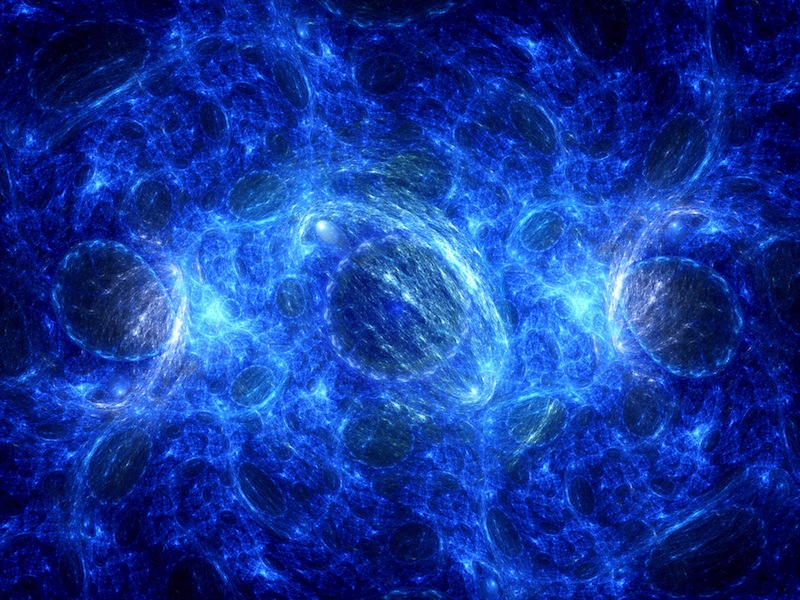WARNING: This article contains spoilers for the Netflix original series"Stranger Things."
The hit new series "Stranger Things" is more than just the 1980s throwback we've all been waiting for. The show centers on a group of kids who are trying to solve a string of mysterious disappearances in their small town, but they soon realize that not all is as it seems. In fact, the kids soon realize that the spooky occurrences may actually be stemming from interactions with an alternate world.
While a sinister parallel universe like the one on the show "Stranger Things" may not be hovering over our own, the basic idea of an alternate world echoes concepts of multiverses that theoretical physicists have proposed for decades, experts say. [Top 5 Reasons We May Live in a Multiverse]
The idea of two parallel worlds that are slightly different, and can even interact, has been a mainstay of physics theories that have sought to explain quantum mechanics, gravity and other unexplained aspects of the natural world, researchers say.
That's not to say that there are definitely alternate worlds teeming with monsters, but the basic premise "is not necessarily in conflict with the laws of physics," said Brian Greene, a theoretical physicist and author at Columbia University in New York City.
However, most people should be skeptical of multiverse theories because there is no evidence supporting their existence, Greene added.
Stranger than fiction
On "Stranger Things," the inhabitants of Hawkins, Indiana, live in uncomfortable proximity to a universe called the Upside Down, which is filled with death, decay and mysterious slimy green moss. A monster infiltrates the bucolic small town from a similar, barren version of the world, and Hawkins residents can travel to the alternate universe through a tree stump or communicate between the two worlds by flicking lights on and off in a house. Also, there are psychic powers, Soviet spies and lots of '80s nostalgia.
Though the show is pure, shiver-inducing fiction, its conception of parallel worlds does seem to have taken at least one page from a legitimate physics theory: Hugh Everett's "many-worlds" interpretation of quantum mechanics. In fact, in one episode, the teacher, Mr. Clarke, even references Everett's mind-bending theory.
Everett, who was a physicist in the 1950s and 1960s, proposed that whenever someone "measures" something in the universe – for instance, if you look at your shoes and notice whether or not a speck of dirt is on them – two separate realities branch out from there. [The 9 Biggest Unsolved Mysteries in Physics]
"The universe winds up branching into many copies of itself," said Bill Poirier, a physicist and quantum chemist at Texas Tech University in Lubbock.
However, unlike our world and the Upside Down on "Stranger Things," these branched-out pathways can never interact, Poirier said.
"No amount of light-flicking is going to overcome that," Poirier told Live Science.
Many interacting worlds
In recent years, Poirier has proposed a variant of this theory, called the many interacting worlds theory, which he described in a paper that was published in 2014 in the journal Physical Review X. The big difference is that these worlds "talk" to each other, in a sense.
Unlike Everett's conception, there are no branching universes. So, a person could conceivably have an evil "twin" in an alternate universe but an individual would not split into two. And while the worlds would interact, the stark differences between the bleak and sinister Upside Down and the humdrum reality of Hawkins, Indiana, would mean, in Poirier's theory, that people in one world could never travel to the other.
To understand why, picture this: a series of alternate worlds are stacked like pancakes, with more similar universes closer together in the pancake stack, while those with dramatic differences are farther apart. Any difference big enough to be seen with the naked eye would mean the universes would be so vastly distant from one another that they could never travel between the two, Poirier said.
"A few objects moved a tiny bit, on the nanoscale, from each other: Those are the worlds that can actually talk to each other and interact," Poirier said.
Braneworlds, Swiss cheese and cosmic loaves
The field of theoretical physics has produced almost as many parallel-world theories as there are branching universes in Everett's many-worlds theory itself.
All, however, suffer from one fatal flaw: At this point in time, no one has found any evidence they exist, Greene said.
"I'm hugely skeptical of all multiverse proposals, as should be everyone else on planet Earth," Greene told Live Science. "Having said that, I think the idea is tremendously exciting."
For instance, some theories emerge naturally from known physics, Greene said. For instance, the generalized mathematics behind the Big Bang, a period of massive inflation 13.8 billion years ago that created the universe, could be used to produce not just one, but many Big Bangs. [Big Bang to Civilization: 10 Amazing Origin Events]
"Many Big Bangs means many distinct universes," Greene said.
Like a block of Swiss cheese, in which each hole represents a separate universe, "they're all embedded within a grander, cosmic expanse," Greene said.
On occasion, these universes could collide, producing a cosmic imprint in the microwave background radiation we detect in our own universe, Greene said.
Another theory, which emerges from some interpretations of string theory, is that of so-called braneworld models in which "our universe is likened to a slice of bread in a giant cosmic loaf," Greene said.
Other slices of bread would be akin to other universes right next to ours in another dimension.
If in fact we live in such a multiverse, traces of these hidden worlds could show up at the Large Hadron Collider, the world's largest particle accelerator, located near Geneva in Switzerland. At this underground facility, proton collisions could produce debris that is ejected from our universe and into another, Greene said.
Quelle: SC

